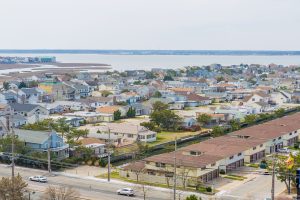
OCEAN CITY — Ocean City’s two-year homeownership incentive pilot program has been so successful thus far, resort officials voted to expand the budget for the initiative.
Earlier this year, the Mayor and Council approved a two-year pilot program to encourage more year-round residents to make Ocean City their permanent home by offering incentives including relaxing some up-front costs such as building fees, for example. The two-pronged incentive program also includes property tax deferrals for the first few years a new resident makes Ocean City his or her home.
Although technically the program is not an expenditure for the town, but rather a reduction in revenue, the program is listed as a line item in the budget at $50,000 per year. On Tuesday, Planning and Community Development Director Bill Neville, whose department oversees the homeowner incentive program, said nine applications have been approved, tapping out the initiative’s $50,000 budget.
“We’ve had an immediate response,” he said. “The word got out and people are hearing about the program from their Realtor or builder. We’ve reached that $50,000 threshold, so my question is, should we stop taking applications until the next fiscal year or expand the budget. The recommendation is to expand the budget by $25,000 to keep the program rolling through the end of the fiscal year.”
The council ultimately voted unanimously to add the $25,000 to the homeownership incentive program. The first prong of the incentive program is relief from the various fees the town imposes on new construction or the substantial improvement of an existing structure including building permit fees. The intent of the Mayor and Council throughout the process has been to get the reduction of those fees to around $7,500.
Neville explained the average value of a new single-family home in Ocean City is around $275,000, which is how the $7,500 target was determined for the fee relief package. However, if a newly-constructed home came in under that $275,000 average, the relief from the various fees could come in less. Neville said the intent was not to reduce the fees to a level lower than what the potential homebuilder would be on the hook for already.
Under one scenario, a potential homebuilder could get relief from all or a portion of the town’s impact fees in order to reach the desired $7,500 threshold. For example, if a $200,000 new home was eligible for a relief in building fees at say $5,000, the impact fees could be reduced by $2,500 to get to the $7,500 target.
The second prong of the program is a $2,500 waiver from property tax deferrals over a five-year period. Like the fee relief package, the proposed reduction would only apply is the potential builder or buyer guaranteed their plan was to make their Ocean City home their permanent residence, which is the point of the incentive program.
“The objective of this program is to bring new year-round residents to Ocean City,” said Council Secretary Tony DeLuca. “They expand the tax base, eat at our restaurants and support our local businesses. We want to encourage people to move here instead of West Ocean City, Ocean Pines, Berlin or Sussex County.”
The program is not necessarily a one-size-fits-all approach because of the disparity in value of new homes. In other words, a property owner building a new home valued at $200,000 doesn’t necessarily get the same relief package as someone building a $350,000 home. Similarly, someone substantially improving an existing residence doesn’t get the same relief as a property owner building a new home.

